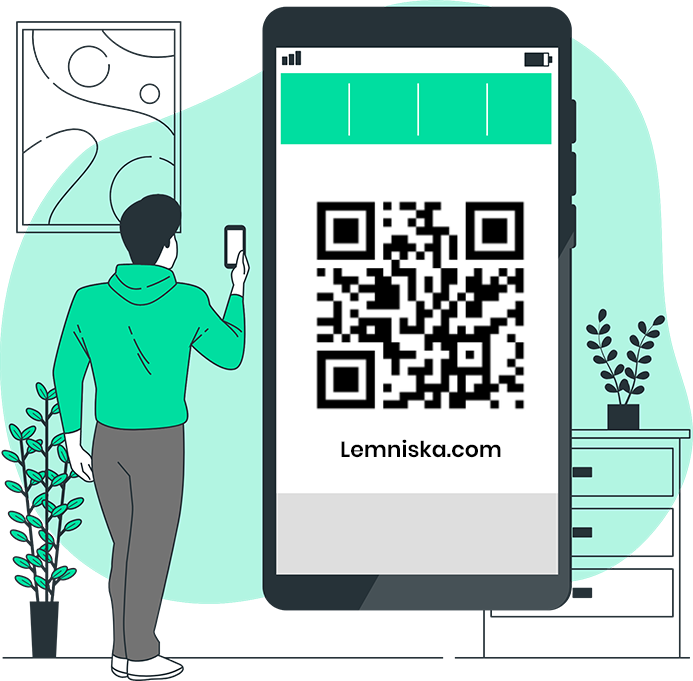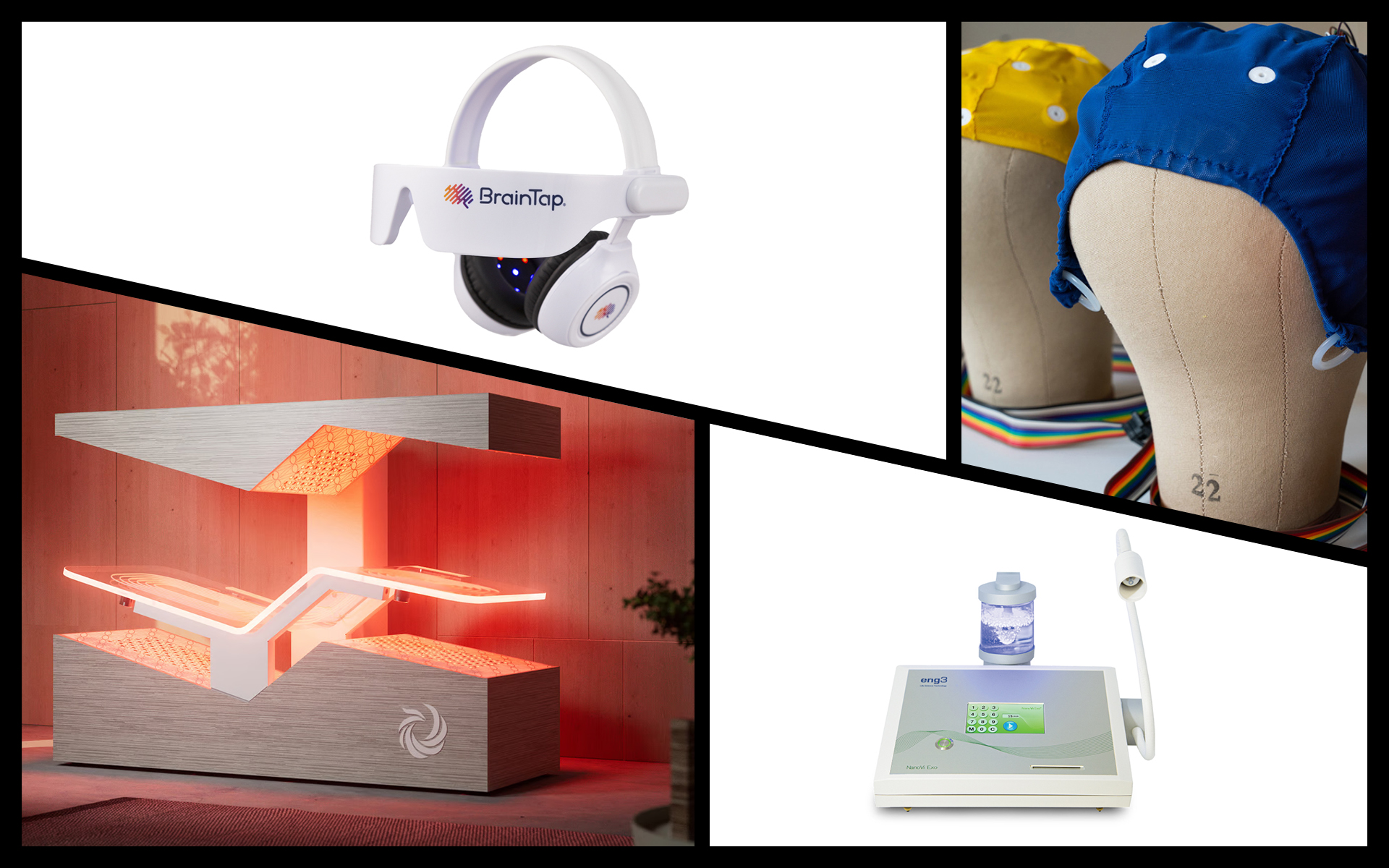When we hear about a new wellness trend—from a friend, a trusted practitioner, or, most often, Gwyneth—we get curious: How does it work? What’s the science behind it? And most importantly, can we try it?
In the past few months, four new high-tech wellness devices have made their way into our lives. What we found: Some have decades of research to support their technologies, and others have emerging science to suggest their efficacy. All of them have the potential to change our wellness routines if they become more accessible in the future.
Of course, none of them hold a candle to the impact of the essentials: a balanced diet, healthy movement, great sleep, and social connection. As always, consult your doctor about any medical concerns prior to starting a new wellness routine.
1. THE MOLECULAR WATER VAPORIZER
GP’s enthusiasm over NanoVi’s innovative technology got my attention right away. Designed to promote healthy aging by preventing damage caused by oxidative stress, it works by using a simple substance: water.
NanoVi’s device transforms liquid water into water vapor and infuses it with electromagnetic waves that are around 1,270 nanometers. The water vapor, coupled with the electromagnetic energy, repairs and stabilizes proteins—making them less susceptible to free radical damage, which can cause premature aging.
How it works: Just fill the water reservoir (with distilled, purified, or reverse osmosis water), plug in the device, and allow the water vapor to move through the air (vapor is released through a tube that’s attached to the device) or directly into your nose via a nasal cannula attachment for about 30 minutes a day.
What the research says: NanoVi has published data on the effects of its own device, which is rare—many times companies have research to support their technology but not necessarily studies that directly test their equipment. NanoVi’s in vitro study (research conducted in a dish with cells) showed that its technology significantly decreased protein damage caused by free radicals after just 12 minutes of water vapor exposure. It has several clinical studies that are pending publication.
2. THE NEUROFEEDBACK TOY
An imbalance in your brain’s gamma, beta, alpha, theta, or delta waves—too much or too little of one—can lead to lack of focus, anxiety, and depression, among other things. Aspen Neuro is a device that quantifies your unique brain wave activity and adjusts imbalances to reestablish healthier brain patterns. In theory, this can lead to better mental focus, physical and cognitive performance, and emotional well-being.
The process starts with a qEEG (quantitative electroencephalogram), a noninvasive tool that measures your individual brain wave patterns with electrodes placed on your head. It’s followed by neurofeedback—monitoring your brain activity in real time and spontaneously rewarding you (with a pleasant video or audio, for example) for altering your thoughts into a more balanced state. This can realign brain patterns over time.
Aspen Neuro’s qEEGs and sessions are performed at its facilities in Aspen, Colorado, and Santa Monica, California, and it also offers at-home services. The company says it sees results within 10 to 15 sessions, 20 to 30 minutes each.
What the research says: Aspen Neuro’s technology is well established; decades of research has consistently shown the use of qEEG to accurately observe brain patterns and determine mental and physical performance and emotional imbalances. And science has shown that neurofeedback, with consistent use, is an effective tool to help change brain patterns for improved athletic performance, enhanced cognition, better focus, and balanced mood.
3. THE SELF-HYPNOSIS APP
I have personally experienced the calming benefits of hypnosis, so when I heard about BrainTap—a technology that pairs hypnosis with sound and light to help improve mood and sleep, increase feelings of rejuvenation and confidence, and enhance social interactions—I was intrigued.
During hypnosis, your brain is in a heightened state of focus, which allows it to be more receptive to change yet remain fully in control. Listening to recordings (or a hypnotherapist) during this relaxed state—with added relaxation-inducing sound and light frequencies—may be able to help you create new habits more quickly.
BrainTap’s app has hundreds of pre recorded hypnotherapy sessions to help retrain your brain with a new habit you want to create. And its headset with goggles (to be worn during your hypnosis session) uses audio and light frequencies that help attune the brain to a relaxed state, which can aid in the brain’s rewiring process.
BrainTap’s app can be downloaded on iPhone or Android. The company says that the key to its effectiveness is consistent daily repetition.
What the research says: Studies show that hypnosis can be effective for reducing symptoms of anxiety, depression, chronic pain, and migraine; improving sleep; and reducing stress. BrainTap has preliminary clinical studies, not yet published in peer-reviewed journals, showing that its headset’s sound and light therapies induce calm and the activation of the parasympathetic nervous system—rest, digest, and repair mode. Yet there’s still research to be conducted that directly measures the effectiveness of BrainTap’s specific hypnosis recordings and headset technology together.
4. THE NEXT-LEVEL RED LIGHT BED
Our minds were blown when our beloved functional medicine expert Will Cole, IFMCP, DNM, DC, told us about the Ammortal Chamber. It’s a therapeutic bed that combines five different technologies—red light, PEMF (pulsed electromagnetic field), PEF (pulsed electric field), hydrogen gas, and sound and gentle vibration therapy—in one apparatus to reduce inflammation and promote longevity and vitality.
Each of the five technologies individually possesses therapeutic benefits, from reducing inflammation and oxidative stress to promoting relaxation. Theoretically, together they activate the parasympathetic nervous system (rest, digest, and repair mode)—which allows our bodies to reach a state of relaxation where it naturally restores itself.
The Ammortal Chamber delivers these five therapies through a canopied bedlike glass structure for, in theory, a powerful sense of calm and bodily repair. You can find the Ammortal Chamber in a growing number of clinics throughout the US, and it’s also available for at-home purchase. Each session lasts from 15 to 60 minutes.
What the research says: There’s decades of research showing that, separately, red light, PEMF, PEF, hydrogen gas inhalation, and vibroacoustic therapy are effective in diminishing inflammation to help the body repair. But research still needs to be done on the Ammortal Chamber to directly test the hypothesis that combining them has an even greater effect.











